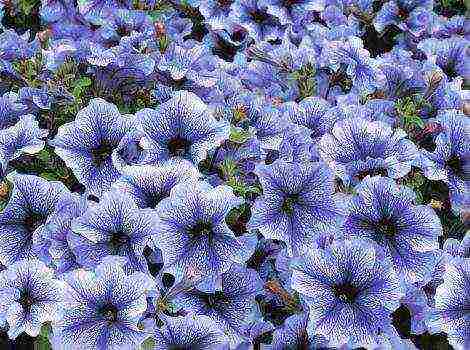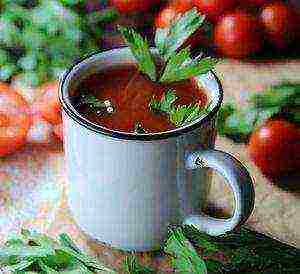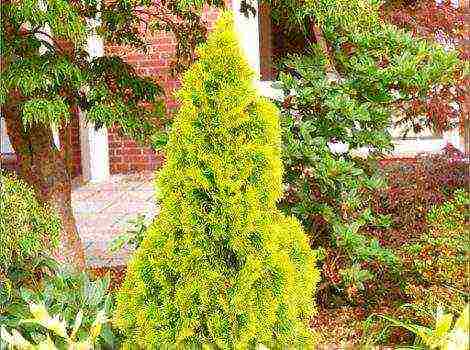Content
- 1 Varietal variety of zucchini
- 2 The best bush varieties for outdoor cultivation
- 3 Best self-pollinated parthenocarpic species
- 4 Early varieties
- 5 Medium ripening
- 6 Late zucchini
- 7 Varieties of zucchini
- 8 Varieties and their features
- 8.1 Apollo FI
- 8.2 Astoria
- 8.3 "Aeronaut"
- 8.4 "White F1"
- 8.5 "White"
- 8.6 "White Swan"
- 8.7 "Black zucchini"
- 8.8 "Boatswain F1"
- 8.9 "Burzhuin"
- 8.10 "Vanyusha F1"
- 8.11 "Golda F1"
- 8.12 "Mountain"
- 8.13 "Gribovsky"
- 8.14 "Pear-shaped"
- 8.15 "Gray zucchini"
- 8.16 "Yellow Banana F1"
- 8.17 "Zebra"
- 8.18 "Karina"
- 8.19 "Masha F1"
- 8.20 "Dream of the hostess"
- 9 What to focus on when choosing zucchini seeds
- 10 The difference between domestic and foreign hybrids
- 11 The best varieties of culture for open ground of domestic selection
- 12 The best seeds of domestic zucchini for greenhouse cultivation
- 13 High-yielding hybrids of foreign origin
- 14 Unusual types of zucchini
- 15 Growing conditions
- 16 Seed preparation for sowing
- 17 Selection criteria for good varieties
- 18 Separation of varieties by ripening period
It's hard to imagine a vegetable garden without a vegetable marrow. This vegetable is one of the first to be harvested and appears on tables in the form of various dishes. The ease of growing zucchini, availability, early maturity and other characteristics allow, with proper care, to grow these plants of various varieties in open ground, greenhouses and greenhouses in Siberia, Moscow region and in the Leningrad region.
Varietal variety of zucchini
Our grandmothers did not think much about the varietal characteristics of the plants grown and from year to year they collected their seeds from the best fruits. Sometimes a new variety appeared on the site, but its main characteristic was color spectrum fruits: white, green, yellow, etc. with
The arsenal of modern gardeners is much wider and the color scale as a sign has faded into the background. Attention is paid to such characteristics as:
- Ripening terms (early, middle, late);
- Growth type (bush, climbing);
- Pollination features (parthenocarpic or insect pollinated);
- Productivity.
These and other characteristics allow the rule to select a species for specific conditions and get the most out of each plant.
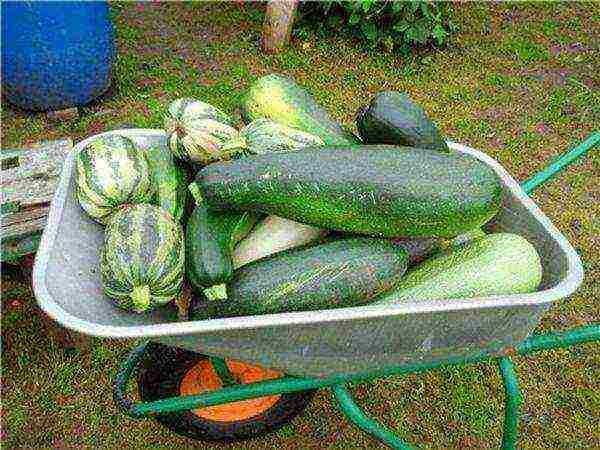 To get a good harvest, you need to select a variety according to its characteristics.
To get a good harvest, you need to select a variety according to its characteristics.
Among the variety of zucchini, special attention should be paid to varieties that have earned the recognition of breeders and are most popular with gardeners. Each group has its own favorites. Someone is convenient due to their ripening time, and someone conquers with their compactness.
The best bush varieties for outdoor cultivation
Most asthenia of the Pumpkin family form long, spreading whipsthat require large areas. At the same time, modern summer residents and gardeners are often limited to 6 acres, on which they want to plant a variety of crops.
The limited space and savings of every meter make planting traditional climbing varieties a real luxury, but bushy ones become a godsend for such sites.
Bush squash you can easy to fit into tight spaces and even plant in a flowerbed among flowers, where large leaves will be an excellent backdrop for other plants.
Aeronaut
Compact plant. Shows good disease resistance.
Fruits are green, 14-15 cm long, tasty, versatile. They perfectly withstand transportation. Subject to the rules of agricultural technology from 1 sq. m of area can be collected 7-7.5 kg.
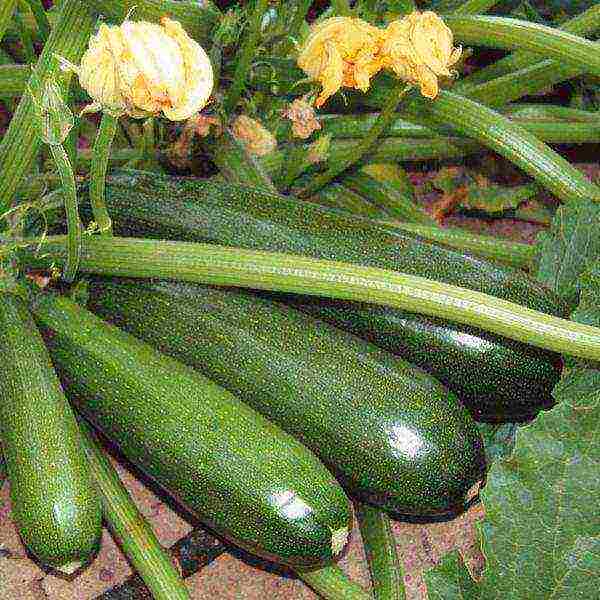 Aeronaut
Aeronaut
White
Ultra-ripe... The first fruits are ready to be harvested within 35-40 days. Fruits of white color, oval, excellent taste, universal purpose The pulp is dense, creamy. Stores well.
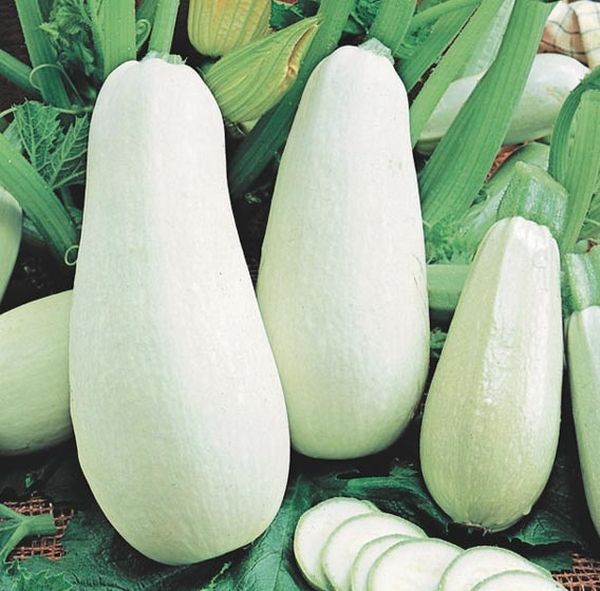 White
White
Waterfall
Early ripe hybrid. Fruits weighing up to 500 g, green. The pulp is dense, white. The yield is high. Disease resistance is above average.
Odessa
Early maturing bush type variety. Disease resistance is very high. The fruits are pale green, cylindrical. The pulp is pinkish yellow or light yellow. Suitable for canning.
 Odessa
Odessa
Best self-pollinated parthenocarpic species
Zucchini forms female and male flowers. In most cases, pollination and fruit setting occurs with insectsthat carry pollen. However, when grown in greenhouses, especially in winter, cross-pollination is problematic.
Parthenocarpic varieties that are able to set fruits without pollination are becoming a real find. Such varieties are also great for open ground.
Kavili
Early ripening and high yields make the Cavili hybrid one of the best.
Fruits are light green, up to 22 cm long. Fruiting is abundant and long-lasting. The ripening period is 1.5 months, and the active setting of new fruits takes place within 2 months in any conditions, even without any participation of pollinating insects. During this time, from 1 sq. m manage to collect about 9 kg... The pulp is tender, juicy, whitish.
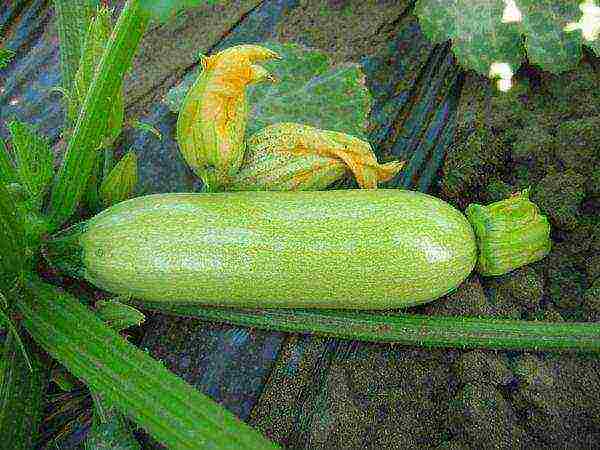 Kavili
Kavili
Jellyfish
Super early hybrid. Ideal for early production under cover films. Withstands large temperature differences.
Ripening period 35 days. The fruits are light green with a delicate skin. The pulp is dense, the seed chamber is miniature. Fruit weight can reach 800 g, with a length of 25 cm.
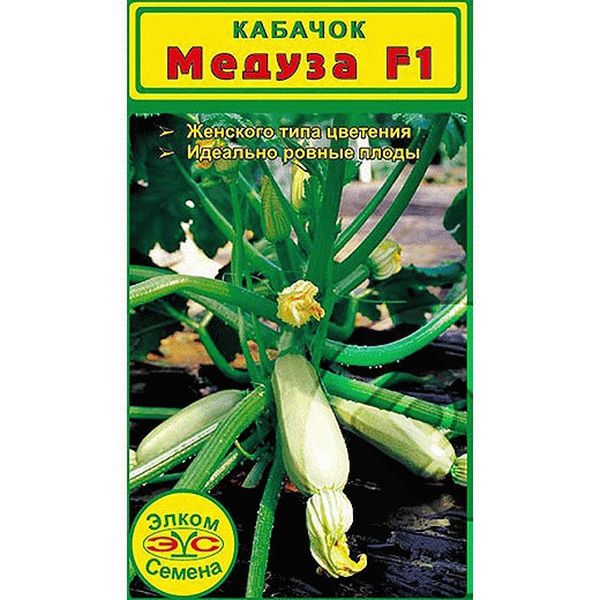 Jellyfish
Jellyfish
Parthenon
A Dutch breeding hybrid, very compact and productive. For 1 sq. m you can place 3-4 bushes and collect up to 15 kg fruits. Good insect-free fruit set and early ripening make this variety an excellent candidate for greenhouse planting.
The fruits of the variety are dark green, cylindrical with light green dense, juicy and tasty pulp. It can be used not only for canning and preparing various dishes, but also eaten raw. Zucchini fruiting period very long and can stretch until September.
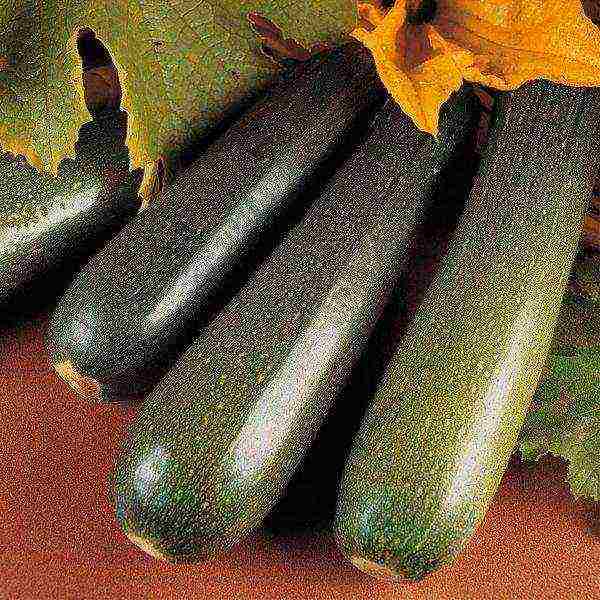 Parthenon
Parthenon
Early varieties
Zucchini varieties of early ripening are of particular value, because it is they who most often become the first fresh vegetables of the new summer season.
Iskander
An early ripe parthenocarpic hybrid bred by Dutch breeders. Ripening period 40-45 days.
The special value of the variety lies in its ability to set fruits at low temperatures, which is especially important for northern regions with cool summers.
When planting 4 plants per 1 sq. m yield is 15 Kg... Iskander fruits are light green, up to 20 cm long, with a thin delicate skin. The pulp is tender, juicy, creamy or white.
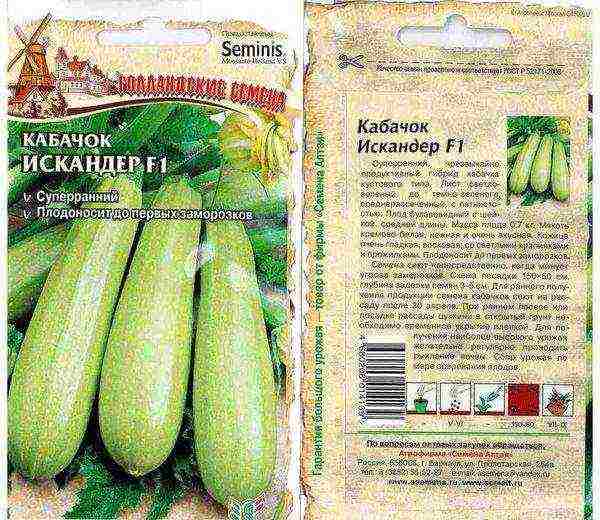 Iskander
Iskander
Tsukesha
The ripening period of the Tsukesha variety is 41-50 days. The plant is characterized by large dark green leaves with gray spots. These are varietal features of color and should not be confused with a disease.
Fruits up to 40 cm long and weighing up to 900 g. Fruiting continues until frost. Fruit well stored and transported... The pulp is juicy, very tasty.
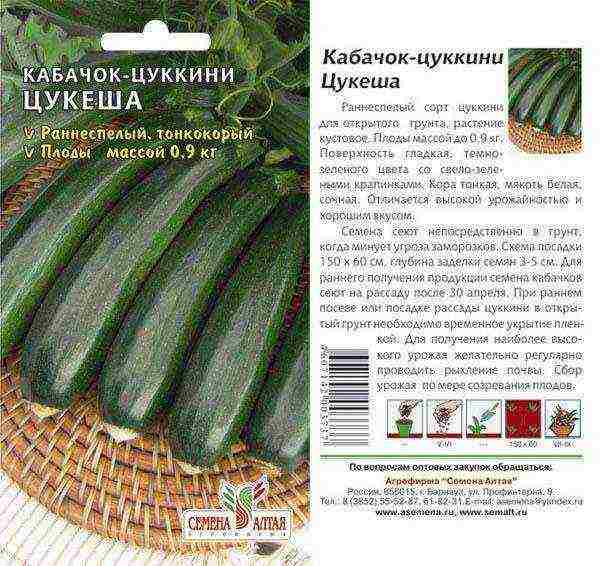 Tsukesha
Tsukesha
Ball
The main feature of the variety is green globular fruit covered with light dots that look like a ball. The pulp tastes excellent.
Ripening period for round squash is 50-55 days. The plant is compact, bushy with strongly dissected leaves.
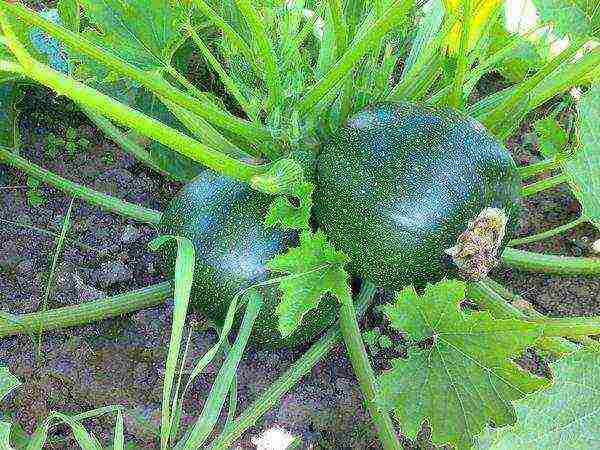 Ball
Ball
Aeronaut
This variety has already been mentioned as a popular bush squash, but the early ripening period is another plus in the piggy bank of positive characteristics. Ripening period 42-45 days.
Medium ripening
Gribovsky
The widely known white-fruited variety Gribovsky. Ripening period is not less than 46 days, depending on the region of cultivation. Plant forms long lashes.
Fruits up to 20 cm in size, white. The skin is hard, the flesh is tasty, white or yellowish. Yield 8.5KG from 1 sq. m.
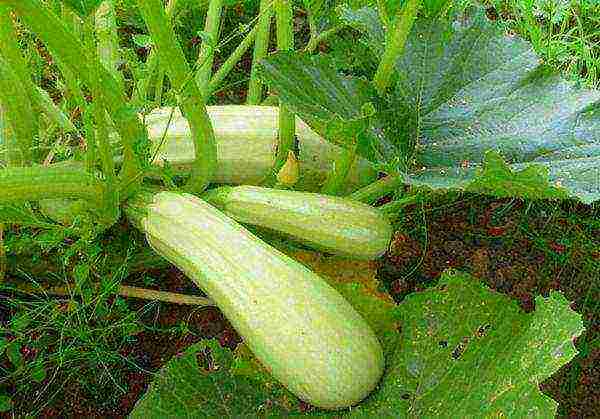 Gribovsky
Gribovsky
Zolotinka
Ripening period 50 days. Bush type of growth. The color of the fruit is fully consistent with the name.
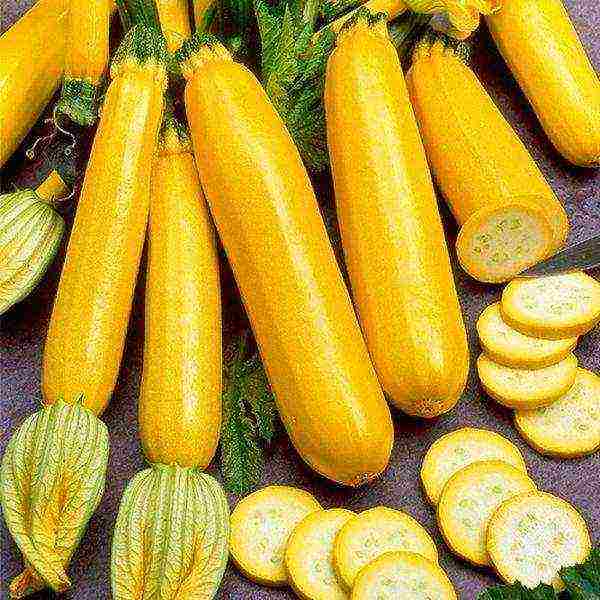 Zolotinka
Zolotinka
Black handsome
Bush grade. Ripens in 45 days. Fruits are very dark green in color, close to black. The peel is thin, the flesh is greenish, with a delicate taste.
The fruits are versatile and suitable for all possible uses. At the same time, 4-5 fruits can be tied on a bush.
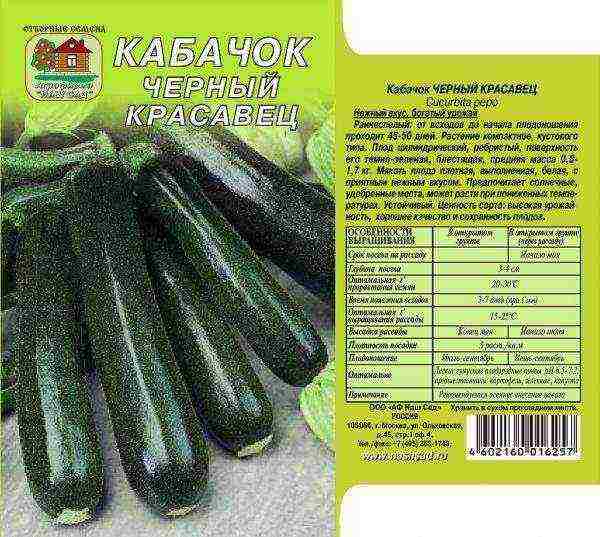 Black handsome
Black handsome
Late zucchini
Spaghetti
An unusual variety that is only gaining popularity.
Young zucchini Spaghetti tastes no different from the usual varieties, but after full ripening, the flesh of the zucchini stratifies into fibers and it turns out a peculiar vegetable spaghettiwhich has many fans. Outwardly, ripe fruits resemble small melons in shape and color.
The only problem - late ripening, which in regions with a short summer does not always allow waiting for "macaroni".
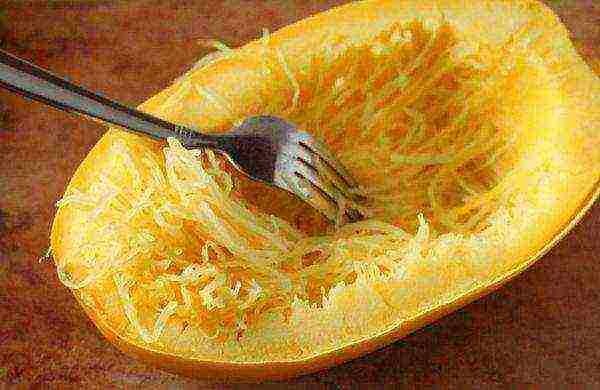 Spaghetti
Spaghetti
Lagenaria (Calabaza)
This type of pumpkin is also called Vietnamese zucchini... Due to the long ripening period and exoticism, lagenaria cannot be called a frequent visitor to vegetable gardens. The shape of the fruit varies.
When young, they are used as food in the same way as pumpkin or vegetable marrow. In a ripe state, the walls and pulp dry out and a cavity forms inside.
Traditionally, this plant was used by some peoples for the manufacture of vessels.
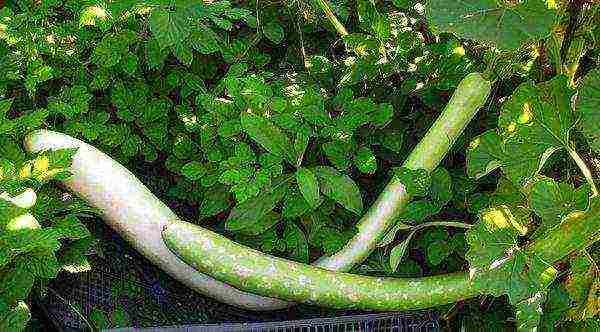 Lagenaria
Lagenaria
The variety of zucchini allows you to choose the right variety not only for certain growing conditions, but also for aesthetic and taste reasons.
With the right combination of hybrids, you can get a good harvest even from a small area and prolong the fruiting period. And some exotic varieties can help diversify traditional culinary dishes and grow craft materials.
To grow zucchini to everyone's envy and surprisingly, you need to observe the growing parameters. The “three pillars” of success are variety, conditions and care.
Zucchini seeds: the best varieties for open ground
Growth conditions
Zucchini need special soil, not heavy, black earth, seasoned with organic fertilizing. On acidic, swampy, with surface groundwater, "royal" zucchini will not grow.
Advice! If the soil is sandy, it is also undesirable to grow zucchini on it, but here, unlike swampy soil, the matter can be corrected by the preliminary application of magnesium fertilizers.
Growing zucchini in the open field
You will have to prepare the soil the day before in the fall. It needs digging to full depth (up to 30 cm), harrowing and fertilizing. The traditional rate of rotted organic matter is added per square meter, which is one standard bucket (about 6 kg). Plus a small amount of potassium supplements - 20 g, and a thirty-gram dose of superphosphate.
Preparing the soil
By the way! In order not to introduce organic matter and save the garden area, which can be used more rationally, you can grow zucchini on a compost heap. Only decomposed compost is suitable for cultivation, not fresh compost. It is desirable two years ago. Productivity with such permanent feeding is usually two to three times higher.
In the spring, the soil is dug up to half the depth, filled with ammonium nitrate (20 g per square meter), loosened with a rake and, warming up in the rays of the warm spring sun, is waiting for new "residents".
Ammonium nitrate
The width of the squash ridge is traditionally made 1.2 m. The best predecessors for this pumpkin crop are cabbage, tomatoes, potatoes and other root crops, onions. After pumpkin, in particular squash, pumpkin and cucumber, squash cannot be grown.
The correct crop rotation for the summer resident
But they can be sown on a joint ridge in one year, if you do not set a goal to grow the fruits of zucchini for seeds.
Advice! Zucchini in a potato field feel great and bear fruit. It is best to plant them around the perimeter of the area with potatoes so that there is enough sun.
The temperature regime for zucchini starts at + 22 ° С. At this temperature and above, there is a rapid growth of leaves, growth of lashes, rapid flowering, massive ovary (in the presence of pollinators and the absence of rain) and ripening of fruits.
As for humidity, high humidity is destructive for the culture. Zucchini can't stand it. It is better to leave them dry than to pour them over. Therefore, among other things, it is not recommended to grow a crop under a film. But if a rainy summer is the norm in your area, the zucchini harvest may be better in a greenhouse.
Zucchini starts to rot due to too high humidity
Care
There are interesting nuances in leaving that are not typical of other cultures. For example, seeds sown in the ground give shoots, which crows, rooks and other large birds love to feast on. If you plan to grow a crop of zucchini, seedlings must be protected from birds.
Advice! To protect the seedlings of zucchini along the plantings, it is necessary to hang strips of paper, foil, film so that they move in the wind and scare away birds.
- Watering. As already noted, you cannot pour zucchini. Therefore, watering is better sparse than frequent; but abundant is better than meager. Plants are watered only with warm water. Ten days before harvesting, watering is stopped.
Growing zucchini: watering
- Loosening. Mandatory after every watering or rain. The severity and crustiness of the soil can destroy the plant. Also, zucchini need hilling with additional (not from the hole) soil, to form a mass of adventitious roots.
- Thinning - will have to be carried out if the seeds are sown directly into the ground. The distance between the growing bushes should be left at least 70 cm, therefore, all control seedlings are removed from the hole, leaving one strongest. It is not necessary to tear a weak plant by the root, as this can damage the roots of another seedling. It is enough just to pinch it near the soil.
Zucchini need to be thinned
- The first feeding occurs when the seventh leaf is formed. Given: water, ammonium nitrate, potassium component (in sulfate form, since zucchini do not like chlorine), superphosphate. Proportions: 10 l, 20 g, 20 g, 40 g. The second feeding with the beginning of the formation of ovaries is carried out by organic matter in the form of a solution of mullein 1:10 or bird droppings - 1:15.
- Pollination - an important prerequisite for fruiting. If there are few insects or they do not work actively enough, they need to be attracted and "interested". It is best to do this by spraying the zucchini with a 2% solution of honey.
Pollination
Flowering zucchini
Advice! The method of attracting pollinators No. 1 is to insist several male flowers of the plant on a weak sugar syrup for a day, and then spray the female flowers with the substance.
It is necessary to collect zucchini in a timely manner, aging, they lose useful elements, their skin and pulp become coarse. If you do not want to get into the book of garden records for growing the largest zucchini, harvest when the fruits reach 15 cm, and will be about 6 cm thick.Over the entire growing season, one plant will give up to twenty zucchini, so fruits, even small ones, are more than enough until the next harvest.
Zucchini harvest
Zelentsy fruits remain for about two weeks. Then the skin coarsens, and they can be stored for five months in individual nets suspended from the ceiling or on straw, without contact with each other.
Varieties of zucchini
Like other garden crops, zucchini differ depending on the characteristics of the variety and the growing conditions, sometimes very strongly. According to the variety of varieties, plants are subject to the following classification.
Varieties of zucchini
Table. Classification of zucchini.
| Ripening period | Early maturing - 35-50 days. Mid-season - 50-60 days. Late ripening - 60 days or more. |
| Cold resistance | Weak - up to 0 ° С. Average - up to -2 ° С. Strong - up to -5 ° C. |
| Shelf life | Long - up to six months (thick-bore varieties). Medium - 4 months. Short - 2.5 months (thin varieties). |
| Method of use | For cooking. For canning. |
Varieties and their features
There are not so many varieties of zucchini, in comparison with cucumbers, tomatoes, peppers, but several hundred will be typed. Especially a relatively new type of zucchini in our latitudes - zucchini. Among them there are favorites and outsiders among summer residents. Let's take a look at the top 20 outdoor varieties.
Apollo FI
Zucchini Apollo F1
Refers to early maturing hybrids. The color of the fruit is pale green, dotted with light specks. The weight of the fetus is on average one kilogram. It is characterized by a dense white interior, which has excellent taste characteristics. It is characterized by cold resistance and the ability to bear fruit in shade, as well as amicable fruiting. Preferred for culinary use. Storage times are average.
Astoria
Zucchini Astoria zucchini
Also from the early ripening squad. View - zucchini. It has dark green fruits with a blackish tinge, monochromatic, not speckled. Weight - one and a half kilograms. The pulp is white, and remains so after full ripening. In technical ripeness, they are removed with a weight of 800 g. Full-ripe - thick-barked, stored for a long time. Ripen in stages over a long period. The variety is suitable for growing throughout the summer and harvesting in parts. Suitable for canning. The shelf life is average.
"Aeronaut"
Zucchini Aeronaut
Zucchini is early ripe. Small and dark, speckled. The pulp is not white, but yellowish at the stage of green and yellow at full ripeness, remains juicy. The fruits begin to be removed with a mass of one kilogram. For better keeping quality, they are grown to 1.3 kg. This variety has a shelf life of 4 months. High portability is unusual for zucchini, but Aeronaut is different. Canned and used for culinary processing.
"White F1"
Zucchini Belogor
Early, white-skinned with dense, not juicy pulp (fruits have a high percentage of dry matter). They begin to remove fruits with a mass of half a kilogram. Full ripeness is considered to be a weight gain of up to a kilogram. The variety is not stored for long. It has a thin, easily traumatized skin. It is used in fresh salads or for culinary processing, and caviar is also prepared from it.
"White"
Zucchini grade White
It is super early and ultra-ripe. His fruits are small, up to a kilogram. They begin to take them off when they have gained a mass of 500 g. The skin is very delicate and thin, almost white, with a slight subtle light green tint. The pulp is not white, but creamy (named for the color of the skin). Differs in resistance to diseases that are traditionally susceptible to zucchini - rot (especially gray) and powdery mildew.
"White Swan"
White Swan
Also early, also white, it is distinguished by the smoothness and regularity of the shape of the fruit. Highly commodity. Layered and stored for a long time. Fruits 800 g. The pulp is snow-white, has an excellent taste. They can be eaten raw or for cooking. Do not use for canning.
"Black zucchini"
Zucchini Black Zucchini
This very early maturing variety has a black-green dense skin and light green-white dense flesh.Fruiting of increased intensity, especially with proper care and sufficient organic fertilization. Transport and storage are excellent. Fruit weight 800 g. Universal application.
"Boatswain F1"
Zucchini Boatswain F1
Early ripe hybrid of original form. The fruits of this variety are round, like small pumpkins. The color is green with soot. They grow to a mass of three kilograms. They are distinguished by excellent keeping quality and the longest shelf life among hybrids. As for the taste, it is one of the brightest among the squash family. Quite sharp, sometimes even a slight aftertaste of bitterness is felt. The fruits can be subjected to any kind of preservation and culinary processing.
"Burzhuin"
Bourgeois
Similar to Boatswain, but it is a variety, not a hybrid. Early ripe, with round, pumpkin-like, dark green fruits. Weight - two kilograms. Keeping quality is high, storage is long-term. Nevertheless, this variety is usually not stored for a long time, but is processed into caviar, since it has bright intense flavor characteristics and the pulp that is ideal for this type of canning in terms of density.
Zucchini Burzhuin F1
"Vanyusha F1"
Vanyusha F1
The variety is zucchini. The form is traditional. Early in terms of ripening. The color of the fruit is a light herbaceous shade with a yellowish-white speck. The skin is thin, the weight of a ripe fruit is 1.2 kg. Removal is possible even at a weight of 700 g. Disease resistance and high yield of the hybrid made it popular. Perhaps - fresh consumption, possible - processing and processing. Ideal for caviar. The medium term is stored.
"Golda F1"
Zucchini Gold F1
Another hybrid that ripens in record time. Differs in amazing in shape (cylindrical) and color (golden-orange) fruits. Weight - three kilograms. They start shooting at 1500 g. The taste is excellent. Appreciated by culinary experts, it can be processed in any way. It has a creamy dense pulp with a rich concentrated flavor. Stored for a long time.
"Mountain"
Mountain squash
Early ripeness, small fruit weight. Harvesting begins as soon as the fruits reach 500 g. At the end of the harvest period, individual specimens can reach a kilogram of weight. The pale creamy, tasty, aromatic pulp attracts many chefs. Productivity is high, storage is long.
"Gribovsky"
Zucchini Gribovsky
A leader who for many years does not want to give up his place to anyone, regardless of the fact that new varieties are constantly being bred. Refers to medium-early ripeness. White shell of the fruit. White pulp. Storage and transportation - these parameters are very high. Culinary processing is also possible the most varied. Fruit weight is recommended no more than 1.3 kg. Resistant to various bacteriosis and powdery mildew.
"Pear-shaped"
Pear-shaped squash
In this early-ripening variety, the fruits are similar to a pear, only their mass is several times greater - maybe about 1.3 kg. For its unusual shape and useful properties, the variety is loved by the people. The zucchini has the most pronounced similarity with the "relative" pumpkin. The shell is creamy yellow, and the flesh is deep orange. The taste and aroma are excellent. The carotene content is increased in fruits. Pickling preservation does not destroy nutrients. You can also use the "pear" for salad. It can be stored for five months.
"Gray zucchini"
Zucchini Gray zucchini
The variety is mid-season and very productive, yielding fruit for a long time and methodically. Covered with gray-green speckled skin. Fruit weight - 1.3 kg. Has a greenish-milky flesh. Usually, a sample is taken from 700 g. And they understand that they were not mistaken with the variety this year, it would be necessary to sow it next year. It is not a hybrid, so the seeds can be harvested.
"Yellow Banana F1"
Zucchini Yellow banana F1
This hybrid also belongs to the zucchini species and is early maturing. Its mass is 700 g. The outside color of the fruit is canary yellow.The inside is flesh the color of baked milk. The skin is thin, the flesh is firm. The presentation is high, the taste is also high. It has a short shelf life and is mostly consumed fresh.
"Zebra"
zebra
The variety lives up to its name with a striped color. There are strict dark stripes on a light green background. It looks like the creation of a fashion designer. The fruit has a dense chalk-colored pulp and weighs one kilogram. The medium term is stored. Resistance to infectious diseases, in particular, powdery mildew, makes the variety respected and famous. And the universal application is also for your loved ones.
"Karina"
Karina
The zucchini variety ripens quite early. It has dark, black-green fruits with thin, light stripes. Almost a mirror image of the "zebra", but larger. The fruits grow up to one and a half kilograms. The pulp is cotton-white, medium density, high taste. It can be stored for a very long time, can be perfectly preserved and used for preparing side dishes and independent meals. Disease resistant.
"Masha F1"
Zucchini Masha F1
An early hybrid variety with medium-sized fruits and versatility. The shell is barely light green in color with a white bloom. Inside medium density, white core. This hybrid, although small in weight, is noted for high yields and resistance to scab, powdery mildew and other pumpkin diseases. Resistant to heat and drought. Stored very well and for a long time.
"Dream of the hostess"
The mistress's dream
This ultra-early ripening variety with white fruits has long been known to summer residents. The skin on the fruit is thin. The mass is small. The maximum is a kilogram, the collection begins at 600 g. Snow-white dense pulp. Bright zucchini taste. The medium term is stored. The product is good to use raw, in salads and appetizers. It can be culinary processed and even canned, mainly housewives prepare caviar from it.
Zucchini are healthy, tasty and satisfying vegetables. They are rich in fiber and are indispensable in dietary nutrition, including weight loss diets, due to their low calorie content. Without zucchini, a vegetable garden is not a vegetable garden. Find a place for several plants, even on a compost heap, and they will bring you an unprecedented harvest without much expense and effort on your part.
Video - How to plant zucchini. Zucchini in the open field
Modern zucchini varieties are often called zucchini and many are lost, not knowing how the plants differ.
In the photo there is a zucchini in the garden
Zucchini also belong to the pumpkin family, but they are distinguished from zucchini by the following parameters:
- the zucchini skin is very thin, the flesh is more tender and juicy. Despite this, the vegetable is perfectly stored all winter at room temperature;
- zucchini, unlike zucchini, have earlier periods of vegetation and fruiting; zucchini have rather compact fruit sizes, the skin of this vegetable is most often colored dark green or yellow;
- unlike zucchini, zucchini do not tolerate frost and cease to bear fruit when the temperature drops.
Zucchini
What to focus on when choosing zucchini seeds
Despite the fact that zucchini loves warmth, this culture shows itself perfectly outdoors in areas with a temperate climate. The optimum temperature for a good crop yield is 23-28 degrees, but even at lower rates, zucchini bear fruit well. The only thing to be wary of when growing these vegetables is soil frost, due to which the plants immediately shed their flowers.
Different zucchini seeds
It is rather difficult to choose the most high-quality and high-yielding varieties of zucchini, since a lot of foreign hybrids have appeared on sale, which do not show themselves very well in the temperate latitudes of Russia. It is also not necessary to focus on early and late-ripening varieties, since zucchini themselves have a rather short growing season and, under optimal conditions, quickly begin to bear fruit.The difference between ripening in early and late varieties sometimes does not exceed a week, which is why these parameters are not very relevant for many growers.
How to collect seeds from zucchini
The difference between domestic and foreign hybrids
Despite the fact that the cultivation of zucchini is practically not associated with any difficulties, when choosing seeds, it is advisable to pay attention to the origin of the seed material.
Domestic varieties are quite well adapted to frost and are suitable for growing in the northern and central regions of the country. But the growing season for these plants is short.
Domestic varieties of zucchini
Foreign hybrids are more tender and show low yields at moderate temperatures. Such varieties are best grown in the southern regions, since the growing season for foreign varieties is longer, which allows you to get maximum fruits from the plant.
Growing zucchini
You should also pay attention to the type of vegetables. Domestic varieties do not differ in beauty and color variability, but long-term preservation and good taste are always at their best. Many foreign hybrids have an excellent presentation, but sometimes the taste leaves much to be desired. It is also worth noting that foreign hybrids have a thinner skin on the fruits than domestic ones, which noticeably affects the ability to preserve in winter. The advantages of foreign varieties of zucchini include the fact that a smaller seed chamber is formed in the fruit, which is why there is more pulp.
When ripe on bushes, foreign hybrids do not overripe and retain their taste for a long time, which makes them attractive for lovers of fresh vegetables.
Zucchini varieties
The best varieties of culture for open ground of domestic selection
Gribovskie 37
Gribovskie 37
This variety is medium early: no more than 57 days pass from seed germination to the technical maturity of the fruit. It is a bushy variety characterized by strong branching of the shoots. The fruits of this domestic hybrid are distinguished by good keeping quality and transportation due to a very dense peel, which changes color from green to white as the seed ripens. Fruit weight ranges from 500 to 1700 grams, the flesh is white, the seeds are large.
This is one of the most unpretentious and frost-resistant varieties that can be grown even in the northern regions. Despite its resistance to rot and infection, the cultivar is often affected by aphids and powdery mildew. Fruit yield is quite high - up to 8 kg per square meter.
Video - Overview of zucchini seeds Gribovskie 37
Apollo F1
Zucchini Apollo F1
This variety is quite common and popular due to its high yield and early maturity. From the moment of seed germination to fruiting, no more than 40 days pass. The plant is distinguished by a powerful and branched bush, with a lot of leaves. Fruits that have reached technical maturity can weigh more than 2 kg, the color is green, with a white speck. The skin is very dense, which contributes to better preservation of the testes in the winter. The pulp is white and has excellent taste.
The main differences of this variety are frost resistance, unpretentiousness during cultivation, evenness of fruits and fruitfulness.
Video clip
Video clip
This variety is the best way to provide yourself with an early and bountiful harvest. The variety shows itself well in the northern regions, is frost-resistant. During the growing season, the plant forms a compact basket with many leaves. The shape of mature zucchini is oval, the color of the peel is light green. The pulp is also light green, very juicy and sweet. The fruits are suitable for both cooked dishes and eaten raw.
Roller, ultra-early ripening, resistant to low temperatures
The variety begins to bear fruit amicably, but in overripe fruits, the pulp quickly becomes tough, so the crop should be harvested constantly.The testes removed in time are stored for quite a long time without losing their taste. The seed chamber of the variety is rather large, with large seeds.
zebra
zebra
This variety got its name from the color of the peel of the ripe fruit. Zucchini are colored light green, but dark green stripes are clearly visible over the entire surface of the fruit. The variety is considered early, productive, not whimsical to growing conditions. The average fruit weight is 800-900 grams. Zebra is very well stored without loss of taste, some fruits are preserved until March.
Zucchini zebra
In addition to excellent taste, the zucchini variety also has a lot of advantages: good transportability, uniformity of fruits, amicable yield, small seed chamber, high seed germination.
The best seeds of domestic zucchini for greenhouse cultivation
Most often, green-fruited zucchini varieties are grown in greenhouses, since these plants do not tolerate weather changes quite well, which has a bad effect on yields. Green-fruited zucchini is a zucchini species that does not always yield good yields in the central and northern regions of the country. You also need to know that for cultivation in greenhouses, it is customary to select those varieties that have a large number of female flowers.
Zucchini in the greenhouse
Interesting to know. Zucchini is a cross-pollinated plant with two types of flowers. On female flowers there are pistils, on male flowers - stamens. When growing zucchini outdoors, female flowers are pollinated by wind or bees. In greenhouse vegetation, it is customary to manually pollinate female flowers with male flowers. For these purposes, you should touch the flowers with stamens with a plucked inflorescence with pistils. This will allow you to get the maximum crop yield.
How to pollinate zucchini yourself
Skvorushka
Zucchini Skvorushka
This variety is distinguished by a large number of feminine flowers. Skvorushka is an early ripe green-fruited variety: no more than 50 days pass from seed germination to maturity. Under optimal germination conditions, the zucchini variety shows high yields. The fruits of the plant are rather elongated, cylindrical in shape, with a slight ribbing along the length. The color of the rather thin skin is dark green, with small specks of white. The pulp is juicy and has a high taste. The average weight of mature testes is from 700 to 1000 grams. Despite the thin peel, the zucchini are fairly well stored and transported.
Video - Review of Skvorushka zucchini seeds
Zolotinka
This variety is classified as a yellow-fruited zucchini species. This is due to the color of the peel and pulp. Gold can be grown not only in greenhouses, this variety has a good yield and in open ground. But due to its low frost resistance, this variety is best grown in the southern and central regions or indoors.
Zolotinka
The main distinguishing feature of these zucchini is the bright color of the peel and flesh, painted in a deep orange color. The peel of Zolotinka is strong, the shape of the fruit is elongated, with a slight ribbing. The pulp is bright, firm, crunchy, high in sugar and juice. Housewives love this variety because, when preserved, the zucchini do not lose their color and, even when thermally processed, remain bright orange.
Zucchini Zolotinka
The fruits of Zolotinka are rather small - up to 10 cm in length and weighing no more than 450-500 grams. From germination of seeds to maturity of zucchini, no more than 50 days pass.
Tsukesha
Tsukesha
This type of zucchini is referred to as zucchini. The variety is early maturing, high-yielding, characterized by compact basket branching. The fruits of the variety are not too large - up to a kilogram, the peel is colored dark green, with bright light blotches. The shape is cylindrical, elongated, with a weak longitudinal ribbing. The pulp of ripe fruits is white, juicy and sweet.The variety is distinguished not only by a high aesthetic appearance and uniformity of fruits, but also by good transport and storage qualities. In order for the yield to be at a height, you should strictly monitor the ripeness of the fruits and harvest them in time. If the crop is not harvested, then the plant stops producing new fruits. Under good conditions, you can harvest up to 12 kg of zucchini per square meter.
Karam 9908380
Zucchini varieties Karam
This variety of zucchini is grown not only under a film or in a greenhouse, but also in the open field. But in the opinion of experienced growers, it is the greenhouse conditions that make it possible to achieve the maximum yield. The variety belongs to the early maturing. No more than 45 days pass from seed germination to the maturity of the testes. The plant has a compact bush basket, leaves are large, dissected. The fruits are formed together, the shape is cylindrical, tapering towards the stalk, without ribbing. The color of the peel of the fruit is pale green or white. The average fruit weight is 700 grams. The seed chamber is large, with large seeds. Under optimal growing conditions, yields of up to 11 kg per square meter can be achieved.
High-yielding hybrids of foreign origin
Foreign hybrids have both their pros and cons. But despite this, more and more recently bred varieties are gaining popularity among experienced summer residents and gardeners.
Belogor F1
Belogor F1
This variety is classified as early maturing, since it takes about 45 days from the moment the seedlings appear to the technical maturity of the testes. This type of squash can be grown by seedlings and by sowing in open ground. The plant forms a not too spreading bush, with few leaves. Ripe fruits weigh up to 1 kg. The rind is dense, thin, painted in a pale green color, without blotches or other patterns. The pulp of the fruit has a high content of juice and sugar, it has a rather high taste. The hybrid is resistant to most infections, white rot. Under optimal growing conditions, you can get up to 14 kg of fruit per square meter of land.
Nero di Milano
Nero di Milano
This high-yielding hybrid is of Italian origin, but despite this it is characterized by increased frost resistance. The optimal yield can be achieved with greenhouse cultivation. It belongs to the early maturing varieties, since the full maturity of the testes occurs 40 days after the germination of the seeds. The mature plant forms into a compact bush. The fruits are elongated, 19-23 cm long, and weigh up to 1500 grams. Ripe fruits are dark green in color. The pulp is juicy, sweet. The high-yielding variety is distinguished by long-term preservation and uniformity of fruits.
Helena
Zucchini Zucchini Helena
This variety is classified as a yellow-fruited crop. Zucchini have an orange skin and flesh. The weight of ripe fruits does not exceed 600 grams, the length is 22 cm. The testes are elongated in the form of a cylinder, tapering towards the peduncle. The variety is quite resistant to most infections, but can be affected by powdery mildew or bacteriosis. The growing season and fruiting period of this early-maturing variety does not exceed 45 days.
Kavili
Zucchini kavili
The variety is early maturing - up to 45 days from the moment of germination of seeds to the appearance of the harvest. During the growing season, the plant forms a small bush with large internodes. The fruits are strongly elongated, with well-defined longitudinal ribs. The color of the peel is green, pale. The pulp is white, juicy, sweet. The seed chambers are small. The length of a ripe fruit is 20-22 cm, weight is up to 500 grams. The variety has a long fruiting period and is suitable for greenhouse and outdoor cultivation.
Video - Cavili zucchini seeds review
Gold Rush F1
Zucchini Gold Rush
This early maturing variety is adapted for growing in open land and has good frost resistance, despite the fact that it is classified as a zucchini hybrid.The fruits are not too large, cylindrical in shape, colored orange. The pulp is white, saturated with juice, with a high sugar content. The length of the mature testis is 18-20 cm, weight is 200-220 grams. The Dutch hybrid has a good yield, uniformity of fruits, suitable for canning and eating raw.
Unusual types of zucchini
Amazing giant
This variety simply amazes not only with the size of the fruit, but also with its good adaptability to unfavorable climatic conditions of the weather. The plant forms a rather large bush, with long and powerful lashes, on which phenomenally giant fruits ripen - up to 8 kg. In addition, the variety is very early ripening and you can visually observe the growth of the crop. The length of a mature zucchini sometimes exceeds 1 meter. The fruits are stored all winter and spring without losing their taste. The flesh of a ripe zucchini is orange, the rind is white. Under favorable conditions, one plant can produce 30-40 kg of fruit.
Spaghetti
Spaghetti zucchini fruit
This variety is a godsend for gourmets who love to discover a new taste. In mature zucchini, the flesh breaks down into fibers and, when cooked, becomes similar to slightly crispy pasta.
Baked spaghetti squash
The variety belongs to the early, but certain conditions are required for growing a crop: good sunlight and controlled watering. If the zucchini grows in the shade, then you can not count on large fruits. Under optimal conditions, zucchini can grow large - more than 3 kg. The baskets of the variety are highly branched, with long and strong lashes.
Video - Effective tips for growing zucchini
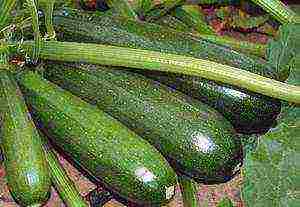 Almost every gardener tries to grow zucchini. On any site there is always a place for a couple of bushes of this plant. An unpretentious culture is characterized by the enormous benefits of the fruit, both in cooking and in various diets. The best varieties of zucchini for open ground are presented in a huge variety of shapes, differing in color, ripening time, fruit shape and taste.
Almost every gardener tries to grow zucchini. On any site there is always a place for a couple of bushes of this plant. An unpretentious culture is characterized by the enormous benefits of the fruit, both in cooking and in various diets. The best varieties of zucchini for open ground are presented in a huge variety of shapes, differing in color, ripening time, fruit shape and taste.
Growing conditions
The plant needs to grow black earth, light, fertilized soil... It must be remembered that on a very swampy land with a close occurrence of groundwater, a vegetable marrow will not grow.
Preparation of the soil for planting is carried out in the fall. It must be dug up to a depth of 30 cm, harrowed and fertilize... Organic rotted fertilizer per 1 m2 should be applied in volume - one bucket. In addition, 20 g of potassium supplements and 30 g of superphosphate are required.
In the spring, the earth should be dug up to half the depth, and then filled with ammonium nitrate. At the end, it is imperative to loosen with a rake. The width of the vegetable patch is 1.2 meters.
The best predecessors in the garden for this pumpkin crop are considered potatoes, tomatoes, cabbage... It is believed that planting this crop after cucumbers, squash and pumpkin is not recommended.
The temperature range starts from + 22C. This indicator is the most suitable for the formation of foliage, the development of lashes, rapid and abundant flowering, mass ovary and ripening.
High humidity for the culture is destructive, and therefore it is better to leave the soil dry than to fill it with water. Given this indicator, the culture is not grown under film.
Care principles
To get a good harvest of zucchini (zucchini), you should understand the basic subtleties of care. For example, seeds sown in open ground quickly sprout, which birds love to peck. That's why they will have to be protected.
-
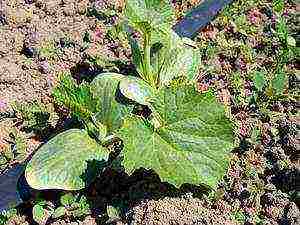 Watering - sparse and abundant watering is recommended. The water should be warm. About 10 days before harvesting, watering the plant is stopped.
Watering - sparse and abundant watering is recommended. The water should be warm. About 10 days before harvesting, watering the plant is stopped. - Loosening is a mandatory procedure after every rain and watering. The plant is destroyed by heavy stagnant soil.In addition, it is necessary to huddle the bush additionally in order to form a mass of adventitious roots.
- Thinning is a process necessary in a situation where seeds are sown outdoors. A distance of 70 cm must be maintained between the growing bushes, therefore, all seedlings are pulled out of the common hole, leaving the only strong one. A weak plant just needs to be pinched near the soil.
- Primary feeding - done after the formation of the 7th leaf. A mixture of water, ammonium nitrate, potassium component, superphosphate should be added. Secondary feeding is necessary after the beginning of the formation of the ovary with a solution of mullein 1:10 or chicken droppings 1:15.
- Pollination is a very important procedure for fruiting. The best pollination tool is considered to be spraying with a 2% solution of honey.
The collection of zucchini must be done on time, until they have lost their useful components, and the flesh with the skin is not roughened... The ideal size of the fruit for harvesting is considered to be 15 cm, and the thickness is 6 cm. In general, during the growing season, up to 25 fruits can be harvested from the bush.
Seed preparation for sowing
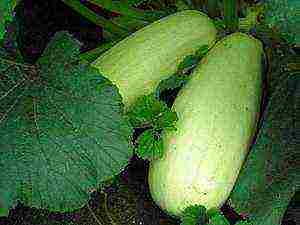 For some time before sowing, the seeds should be disinfected. The easiest way is to keep them in the sun for a couple of days. After the heating process, they are kept in a weak solution of potassium permanganate and washed with cold water.
For some time before sowing, the seeds should be disinfected. The easiest way is to keep them in the sun for a couple of days. After the heating process, they are kept in a weak solution of potassium permanganate and washed with cold water.
To get strong shoots, treatment is carried out with a solution of wood ash. A spoonful of fertilizer dissolves in a liter of water. Of course, seedlings will grow faster if they are previously germinated.
A couple of days before sowing in open ground, any kind of zucchini is soaked and folded into a cotton cloth, as shown in the photo. When landing sprouts can be easily damagedas they are very fragile. That is why the sprouts should not be stored - they are planted immediately.
Sowing rules for zucchini
If the seeds are sown for seedlings, it should be remembered that the plant reacts extremely painfully to transplants. It is better to grow seedlings in a separate peat pot so that the container is deep enough.
It is often struck by a fungal disease - black rot, and therefore the soil before planting must be watered with a hot solution of potassium permanganate or frozen. The plant is planted in well-warmed and loosened soil, and the seeds should lie a maximum of 4 cm deep. From above, they must be moistened so that the seedlings do not weaken in the future.
Selection criteria for good varieties
In order to know what is better to plant on the site, you need to understand at least main criteria for the selection of varieties.
-
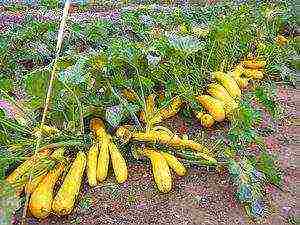 Shrub or climbing form - many varieties of zucchini are bushy, and therefore easier to grow in a large area. The fruit is cut small when the skin is thin and the flesh is tender.
Shrub or climbing form - many varieties of zucchini are bushy, and therefore easier to grow in a large area. The fruit is cut small when the skin is thin and the flesh is tender. - Varieties and hybrids - the latter give a stable harvest, but only of the first generation.
- Possibility of pollination - varieties are pollinated traditionally or parthenocarpically. In the second case, the seeds are incapable of life when planted. Good self-pollinated varieties are: White Swan, Belogor, Apollo.
- Varieties - zucchini and common zucchini with white, yellow and yellow-green fruits. Zucchini are characterized by high juiciness and high yield.
- Producers - a feature of imported varieties is considered to be early ripening, hybridity, beautiful appearance, but the scarcity of mineral composition. Domestic zucchini lasts longer and tastes better. In addition, they are more resistant to frost and contain a wide range of vitamins.
Separation of varieties by ripening period
The whole variety of zucchini is conditional are divided into three categories:
- Early ripening - up to two months, and earlier ripen in almost a month. Sometimes miniature fruits can be removed in the third week. These varieties are considered a good option for the northern regions of the country. In the southern regions, such varieties are usually planted with a “second run”.
- The average ripening period is 50 - 60 days.
- Late ripening period - from 60 days.They are filmed in the fall.
The nicest varieties
It is difficult enough to name definitely the best varieties of zucchini, because some recognize early ripening, others only mid-season, and someone only loves zucchini. Each gardener singles out his favorite variety, and therefore we we will indicate time-tested and high-demand cultures.
- Gribovskiy 37 is a mid-season high-yielding variety with excellent taste. The first harvest can be harvested already on day 10, when the zucchini will be about 12 cm long. Technical ripeness is observed from 1.5 months. The fruits are stored for a long time.
- Belogor F1 is an early ripening variety that can be eaten 34 - 57 days after the first shoots. The fruits are light green and have a shortened central stem. Zucchini weight 0.5 - 1 kg. Produces a rich harvest and is recommended for open field cultivation.
- Zebra is a zucchini variety suitable for greenhouse and open field cultivation. The fruits are very beautiful, rounded-elongated with green stripes, as shown in the photo. The juicy pulp is delicious. This type of plant is not afraid of low temperatures.
- Zolotinka is a yellow zucchini that can weigh up to a kilogram. Small fruits, weighing up to 400 g, are distinguished by good taste characteristics. Children like sweet pulp very much. You can store the fruits for about two months.
- Pharaoh is a salad variety of zucchini that ripens well in 40 days. The weight of cylindrical fruits reaches a maximum of 1 kilogram. The yellowish flesh is sweetish and juicy. It is advised to plant it in soil that has been previously fertilized with fertilizers. The variety is not susceptible to gray rot and is well transported.
- Kuand is a zucchini variety, the fruits of which are harvested between 52 and 61 days. The maximum fruit length is 28 cm, and the weight is 1.5 kg. Delicious pulp is hidden behind a thin skin. You can collect up to 20 kg of zucchini per square meter. Kuand is rarely affected by gray rot and powdery mildew.
Popular zucchini varieties
Today, a whole list of cultural representativesin stable demand:
-
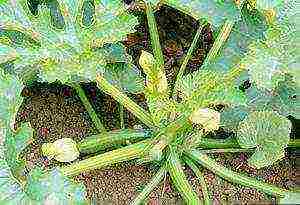 Orange is a good early ripening variety with a compact bush (the photo is on the Internet). Fruits of a round shape, the diameter of which does not exceed 15 centimeters, are colored orange. Ripe zucchini will be 40 days after sowing. The yield is high.
Orange is a good early ripening variety with a compact bush (the photo is on the Internet). Fruits of a round shape, the diameter of which does not exceed 15 centimeters, are colored orange. Ripe zucchini will be 40 days after sowing. The yield is high. - Astronomer is a bush marrow variety. The skin is soft and pale green, and the flesh is white. By region and type of cultivation, the variety is universal. A good crop does not require pest control. After the flowers appear, and then the fruits, it is important to water the plant.
- White-fruited - a variety of zucchini, eaten on the 44th day of cultivation. The cylindrical shape of the fruit is narrowed towards the peduncle. The crust is quite thick and creamy.
- Diamond F1 is a cylindrical zucchini with a ribbed base. Its color is dark green. Under a thin peel, there is a sweetish pulp of a milky hue. For use in dishes, it is better to pluck the zucchini up to 20 cm in length. This type of culture is stored for a long time.
- The hare's ear is a cylindrical zucchini with dense juicy pulp. A powerful bush begins to bear fruit 50 days after planting. In shape, the fruits resemble hare ears, and their color is unusual - light green in a dot. A rich harvest is removed from the bushes.
- Casanova F1 - early ripening good zucchini, ready for use in dishes for 45 days. The bush is drought-resistant, semi-growing, not tolerant of waterlogging. The long fruits are light green with white dots. Their weight can reach 1.5 kg.
This vegetable is very useful, and regardless of its variety. The timing of collection is not fundamentally different, and therefore it is necessary to understand the types in order to experiment with dishes.
Planting and caring for zucchini
